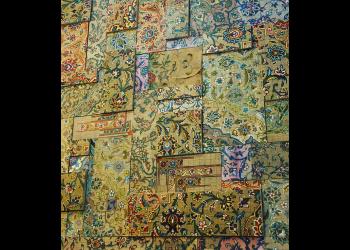Building on Gains: Twenty-Five Years After Beijing
Twenty-five years ago, more than 17,000 participants, including government delegates, NGO representatives, civil society actors, and other interested parties, gathered together at the Fourth World Conference on Women in Beijing, setting in motion a pivotal and transformative process in the lives of women and girls, indeed, for all of humanity. From it emerged the Beijing Declaration and Platform for Action—what many call the most comprehensive roadmap for gender equality to date.
But recent trends have prompted many to ask, to what avail? Many are dismayed by an apparent retreat from the promising steps forward—in some cases countervailing processes actively work to undermine advances made. This has unfortunately become compounded by a global pandemic whose effects have disproportionately exacerbated the vulnerabilities experienced by women and girls. Where do we go from here?
Central to revitalizing the spirit of hope and optimism is a recognition that progress is not always linear. Clearly, there are many societies that fall short of enabling women the opportunity to express the full potentialities of the human spirit. Yet, at the level of global discourse, the equality of women and men has, for the most part, assumed the force of a universally accepted principle. And notwithstanding the cascading and compounding threats that exist today, on average the quality of life for women and girls, though still short of our highest aspirations, is far better than twenty-five years ago. From an historical perspective, prejudices that once seemed inherent in human nature are gradually giving way and the magnitude of possibilities for the future are becoming ever more apparent. The process that so many sacrificed so much to put in motion is steadily becoming more embedded in our collective heritage.
The Fourth World Conference on Women itself was not an isolated event. It built on strides in international policy and legal frameworks developed in the half a century that preceded it. Beyond the formalization of numerous women’s rights, various actors were also recognizing the importance of women’s participation in peacebuilding, peacekeeping, and development efforts. All of this was achieved amidst a backdrop of considerable backlash. Yet the unity of vision and strength of resolve was enough to propel the movement forward. We can derive meaning from this narrative as we look ahead upon this moment of reflection. How, then, can we take the next steps to deliver on the promises of our hopes? How can our efforts lead to change that is enduring?
History has shown us that cyclical and resurgent injustices will continue to persist as long as the institutions and standards of humanity are not empowered to construct a new order of relationships. Building institutions that manifest justice, equity, and unity requires commitment to a process that is coherent with the vision we have all articulated, one that reflects the ambitions at the heart of the Beijing Declaration and Platform for Action. Such a process is based on mutual expressions of power characterized by consultation, collaboration, and universal participation. This mode of operation would be defined by a commitment to finding solutions, it would require patience, humility, a willingness to listen, openness to a diversity of perspectives, and freedom from rigid attachment to one’s views and approaches. Such a mode of operation will better equip us to collectively analyze the social structures and power dynamics that continue to perpetuate inequalities at every level of society. And drawing on these constructive expressions of power will provide us with the tools needed to construct institutions that are more equal and inclusive, ones that are then able to unlock the true potential of every individual.
And as important as is the creation of more inclusive structures, together with the necessary will to translate commitments into action, comes the important work of strengthening relationships at every level of society. An indispensable element, then, will be the work of transforming personal attitudes. Educational programs that aim to break down prejudicial barriers by instilling attitudes of unity and fellowship from a young age will not only break down hardened norms and stereotypes over time, but will also pave the way in raising future protagonists who will commit to walking shoulder to shoulder with diverse actors in service to their societies. For a heart that sees all as active agents of change, as co-workers towards a common vision, recognizes that our collective power can only be enhanced through diversity, justice, and equity. Such a heart will neither allow a retreat to oppressive habits and patterns of thought, nor will it allow a portion of society to be deprived from the means to contribute to an ever advancing civilization. It is through cultivating these cohesive attitudes that we can truly contribute to lasting change.
A transformative process has been set in motion, a foundation has been paved, and a plan of action outlined. To this generation lies the task of building on these gains, brick by brick, confident that our actions are contributing to an unshakable structure for a prosperous future, one that is defined by unity, justice, and inclusivity. To lay these bricks, to build a structure that is reflective of this highest aspiration, indeed, will take time and resolve if it is to be enduring. And the extent to which the bricks will remain intact, resilient against any opposing force, depends on the quality of the bonds that now cement together our efforts.
Saphira Rameshfar is a Representative of the Bahá’í International Community to the United Nations
